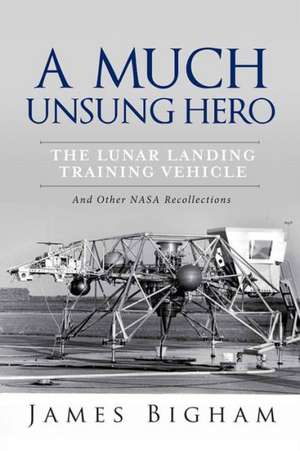A Much Unsung Hero, the Lunar Landing Training Vehicle
Autor James Bighamen Limba Engleză Paperback – 19 apr 2015
Preț: 98.70 lei
Preț vechi: 145.74 lei
-32% Nou
Puncte Express: 148
Preț estimativ în valută:
18.89€ • 19.77$ • 15.63£
18.89€ • 19.77$ • 15.63£
Carte indisponibilă temporar
Doresc să fiu notificat când acest titlu va fi disponibil:
Se trimite...
Preluare comenzi: 021 569.72.76
Specificații
ISBN-13: 9781631927607
ISBN-10: 1631927604
Pagini: 76
Dimensiuni: 152 x 224 x 8 mm
Greutate: 0.16 kg
Editura: Bookbaby
ISBN-10: 1631927604
Pagini: 76
Dimensiuni: 152 x 224 x 8 mm
Greutate: 0.16 kg
Editura: Bookbaby
